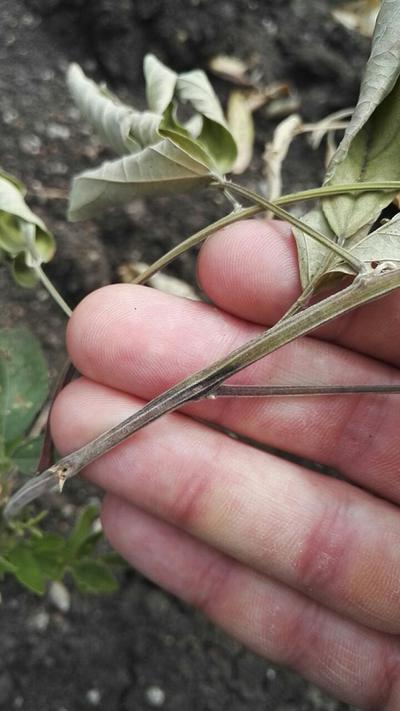Stem Rot of Pigeonpea
Phytophthora drechsleri f. sp. cajani
Fungus
In a Nutshell
- Water-soaked lesions on leaves.
- Brown to black sunken lesions on stems and petioles.
- Sudden death of infected seedlings.
Can also be found in
Symptoms
An infection of young seedlings leads to damping off (sudden death). If the plant does not die, large galls develop on the stem. Infected plants show water-soaked lesions on the leaves. On stems and petioles, brown to black and sunken-in lesions appear. Above the stem lesions the plant starts to wilt and might eventually die.
Recommendations

Organic Control
Pseudomonas fluorescens and Bacillus subtilis, as well as Trichoderma viride and hamatum are effective against stem rot.

Chemical Control
Always consider an integrated approach, using both preventive measures together with biological treatments if available. You can treat your seeds with 4 g metalaxyl per kilogram of seeds to prevent Phytophthora Blight.
What caused it?
The symptoms are caused by the soil-borne fungus Phytophthora drechsleri. It overwinters in plant debris. Humid conditions like drizzling rain and temperatures around 25°C favor an infection. Leaf wetness of 8 hours is required for an infection. Pigeon peas develop a resistance to the disease after some time.
Preventive Measures
- Use resistant varieties if available.
- Use raised beds in sites with poor drainage or with soggy soils to avoid water logging.
- Do not plant pigeon pea on fields with previous records of blight.
- Keep a wider space between seeds or seedlings at planting.
- Mulching or intercropping with for example mung bean or urd bean can reduce blight incidence.
- The infection risk can be reduced by applying potassium fertilizer.
- Apply crop rotation with non-host crops.



